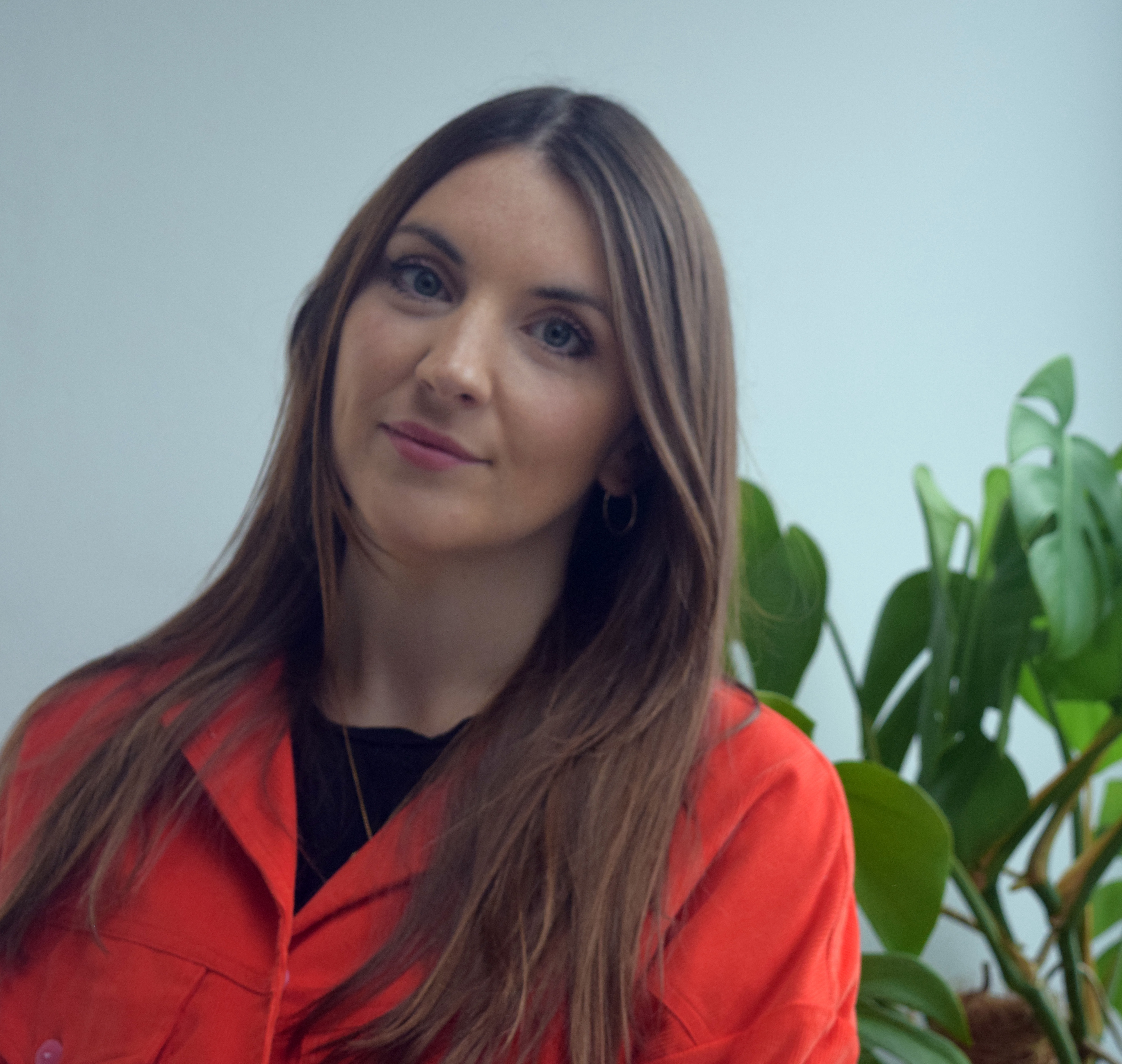ADHD in women is more common than you'd think - here's how to know if you might have it
With celebrities like Gemma Styles and the Bachelor's Abbie Chatfield opening up about their ADHD diagnoses, you might be wondering if you have symptoms yourself


With celebrities like Gemma Styles and the Bachelor's Abbie Chatfield opening up about their ADHD diagnoses, you might be wondering if you have symptoms yourself
At 23 years old, model and law graduate Leanne Maskell appeared to have it made. But the truth beneath her enviable Instagram photos told a different story. Maskell was struggling to take control of her future, flitting between career paths and quitting internships after just a few days at a time. Her personal life was equally chaotic - she’d broken up with her boyfriend of five years and moved to the other side of the world on a whim. What she never thought of as being a cause was ADHD in women.
“I just kept making really bad decisions,” she says. “When I got to Australia, I thought, now what do I do? I ended up becoming suicidal. Things had spiralled from not knowing what job to do, to feeling like I can’t do anything and that I don’t fit into the world.”
What Maskell didn’t realise at the time, was that rather than anxiety, severe or low grade depression or even chronic stress being the root cause of her unhappiness, she has Attention Deficit Hyperactivity Disorder (ADHD).
ADHD in women: your need-to-knows
What is ADHD?
As the name suggests, ADHD is associated with inattention and hyperactivity, but it can also present as hyperfocus or the tendency to get lost in tasks.
Although it was first discovered in 1798, ADHD diagnosis rates have risen rapidly in recent years. In the US, rates among adults went up by 123% between 2007 and 2016. The increase has raised questions about whether ADHD is being over-diagnosed, but — in the UK at least — the opposite is true. Only 1% of the UK population have an ADHD diagnosis, despite the fact 1 in 20 (5%) are estimated to have the condition, according to according to ADHD UK.
Why are ADHD diagnoses on the rise?
“There's an overhang of adults who were never exposed to what ADHD is,” explains Henry Shelford, CEO and Co-founder of ADHD UK. “ADHD was only recognised in the UK in 2000, so if you were in school before then the chances of it being picked up were very limited.”
Celebrity news, beauty, fashion advice, and fascinating features, delivered straight to your inbox!
Shelford says that today, parents are getting diagnosed with ADHD through their children. 75% of incidents of ADHD are genetic, and so some parents end up recognising the symptoms in themselves after a school has raised concerns about their child.
The rise of ADHD influencers on social media has also helped to bring the condition to mainstream attention. Across platforms like TikTok, Instagram and Twitter, people have been opening up about their experiences of living with ADHD. Today, videos tagged #ADHD on TikTok have been viewed more than 13 billion times.
Meanwhile, Shelford says he’s seen an uptick in adults coming forward for assessment since the start of the pandemic. “If you’ve got undiagnosed ADHD, you’ll have developed strategies in your day-to-day life to help you feel okay,” he explains. “The pandemic threw those strategies up in the air. So suddenly lots of people were struggling, and they came forward for help.”
What does ADHD feel like?
ADHD is more common than some neurological conditions, such as autism, but is often poorly understood. It is characterised by inattention (or hyperfocus), or excessive activity and impulsivity.
However, a more popular way of describing the condition among the ADHD community is that it’s like having a “racecar brain with bicycle steering”. Essentially, with ADHD it can feel like you have more raw brain power than control.
Sometimes ADHD presents as if you are under-steering the bicycle, or failing to pay attention to what’s around you. Other times, it’s like you are over-steering it, or becoming hyper-focused on certain topics, zooming into something and staying there.
Navigating life changes
While ADHD is a lifelong condition that doesn’t stop or start at a certain point, a person’s symptoms can often worsen at points when the structure of their life changes. This might be when changing school, starting their first job, having children, or retiring.
In Maskell’s case, leaving education was the tipping point. “Basically, my life fell apart after I graduated from university,” she says. “I lost the structure of having something to do every day, and I couldn’t figure out what career path to take because ADHD affects your ability to prioritise and make decisions.”
She continues: “I was constantly in need of something to do, but didn't know what to do. For me, ADHD is like having an internet browser with 5,000 tabs open, where they’re all as important as each other, and you just flit between each one.”
The three types of ADHD
There are actually three different types of ADHD, although they exist on a spectrum.
Predominantly hyperactive-impulsive
This can feel like having bounds of internal energy that must be used, which might be expressed as:
- Fidgeting or squirming a lot
- Talking non-stop
- Constantly in motion
- Impatience (from needing to do things)
- Difficulty waiting
- Interrupting conversations
Predominantly inattentive
This type of ADHD is more about finding it difficult to control your attention. People with this type might find it:
- Difficult to focus
- Get easily distracted
- Have difficulty maintaining focus on one task
- Get hyper-focused on certain things (the flip side of a lack of control)
Combined type
People with ADHD commonly present a combination of hyperactive-impulsive and inattentive symptoms. “Most people present both types, but the gradient between the two types differs significantly between individuals,” says Shelford.

So, what about ADHD in women?
There are common misconceptions about ADHD - one being that only men get it. Think about it: when you think of ADHD, an image of a young, hyperactive boy likely springs to mind, which can be especially harmful to women. “You don’t need to be hyperactive to have ADHD and we don't have a deficit of attention: we have challenges in controlling our attention," explains Shelford. "Girls are less likely to have hyperactivity of ADHD, but because everyone equates ADHD with hyperactivity, this diminishes their chances of the condition being picked up.”
The way women are socialised could also have something to do with it. “As women, we get conditioned from childhood to sit down, behave, and not make any noise,” says Maskell. When she was a child, she wasn’t physically hyperactive — in fact, she’d often fall asleep in class when she was bored.
“ADHD often presents in women in a very masked form, with mood, anxiety and persistent shame issues, with toxic perfectionism, accompanied by working a lot harder than others behind the scenes to achieve,” explains psychotherapist and psychiatrist Dr Helen Read, who recently set up her London-based ADHD Consultancy after retiring as the Lead Consultant for ADHD at a large London NHS Trust. “The combination of an outwardly successful life, with a disorganised home environment is often seen. Many women with ADHD are people pleasers, but often feel ashamed, "never good enough", and struggle with imposter syndrome”.
During the school years, girls with ADHD are often put down as “not academic” or “ditzy” when they fail to focus in the classroom, says Dr Read. At A Level, there is often a significant drop in their school performance, which is usually explained away as “emotional issues”.
Dr Read continues: “ADHD people feel emotions and experiences very intensely, as a population we are all traumatised, so women in particular often spend years in unsuccessful mental health or psychotherapy treatments. There is a huge gap in medical education about ADHD - many doctors still do not believe it is real.”
On top of this, there is resistance within the medical community to acknowledge the correlation between emotional dysregulation and ADHD. “In my view, this is because accepting this would also mean accepting that many of our psychiatric labels are very often misunderstood presentations of ADHD. And so misdiagnosis with mood, anxiety or personality disorders is very common with ADHD,” says Dr. Read.
She continues: “Large numbers of women are languishing in psychiatric clinics, therapy rooms and GP surgeries, with this most treatable of conditions. A raft of physical health conditions such as PMS, PMDD, PCOS, fibromyalgia, CFS, allergies, autoimmune conditions, migraines and various conditions associated with hypermobility should all be red flags for us and our doctors to look for possible underlying ADHD."
“Since untreated underlying ADHD only responds to ADHD treatment, all these conditions often improve dramatically when it is picked up and treated," says Dr. Read. "This is not only a tragedy for the millions of women stuck in this trap, but also wastes millions of pounds on treatments and therapies that are not going to be effective."

The dangers of ADHD
Another common misconception of ADHD is around just how difficult it is to live with. “People without ADHD can recognise some of the ways it expresses itself in themselves,” says Shelford. “They'll be familiar with procrastination, issues of timeliness with a need to focus. And that familiarity can breed contempt towards ADHD traits.”
Some might experience someone’s ADHD traits and put them down to a lack of effort or rudeness, for example. However, there is a line between neurotypical behaviours and ADHD symptoms, and that’s whether or not those behaviours are having a debilitating impact on the rest of your life.
“If you find it hard to focus, but with some knuckling down you can, then it's unlikely to be ADHD,” says Shelford. “The line is where you have no control of your focus and you are getting into real trouble in life.”
As Maskell’s story illustrates, ADHD can make life feel impossible. One large Canadian study found that one in ten men or boys with an ADHD diagnosis will attempt to take their own life. For women and girls with ADHD, this stat rises to one in four. If your or someone you know is experiencing suicidal thoughts, see our guides on finding mental health help and how to help someone who is suicidal.
“ADHD is difficult, and people don’t know how difficult it is,” says Shelford. “Wait lists across the country are measured in years, not weeks or months. When you look at the statistics on suicide and ADHD, you can see how difficult it is. It is absolutely negligent of our country to leave these people languishing on a waitlist.”

Do I have ADHD?
If you are struggling and think that ADHD could be at the bottom of it, know that help is out there and that ADHD treatment is highly effective. It’s important to arm yourself with as much information as you can about the condition through social media, online platforms like Additude magazine, or books like Maskell’s excellent ADHD: An A to Z.
“Go with your instincts and do not be put off by those around you, or even your doctor, dismissing the possibility of ADHD,” says Dr. Read. “Since there is pretty much no medical information about ADHD taught in medical school, you may soon be in the scary position of knowing a LOT more about it than your doctor, or even the NHS specialist who assesses you. Every woman who is resourceful, determined and able to show their GP the difference ADHD treatment makes, is helping other women who may be less informed and less able to fight for themselves and their children.”
There are also various online assessment tools, such as this one by ADHD UK, which can be another good place to start. “We, as a charity, don't talk about coping with ADHD, because coping is not good enough. We know that people with ADHD can thrive,” says Shelford.

Take Leanne (above) for example, who, following treatment, has published three books, started working as an ADHD coach for individuals and groups, has launched her own retreats, plus, most importantly, is a lot happier. As she puts it, “Once you’ve discovered the key to your own brain, it’s a really powerful thing.”
